Meghalaya: The Rainiest Place on Earth
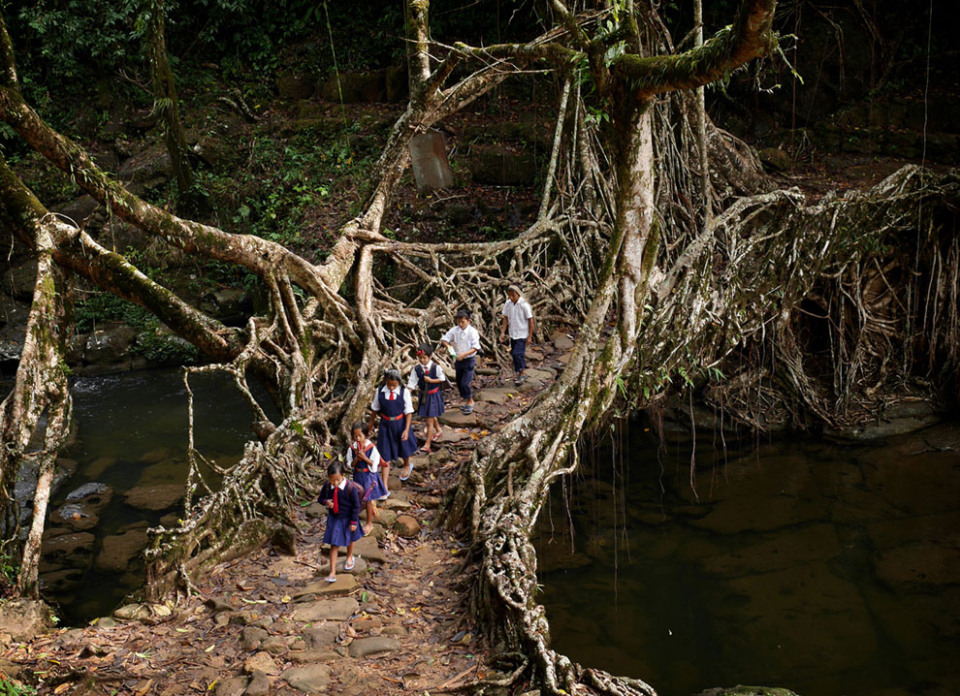
In a scene played out every weekday morning, students of the RCLP School in Nongsohphan Village, Meghalaya, India, cross a bridge grown from the roots of a rubber tree. In the relentless damp of Meghalaya’s jungles, wooden structures rot away too quickly to be practical. For centuries the Khasi people have instead used the trainable roots of rubber trees to “grow” bridges over the region’s rivers.
New Zealand based photographer Amos Chapple captured amazing images of the state of Meghalaya, India, allegedly the wettest spot on Earth. The village of Mawsynram in Meghalaya annually receives 467 inches of rain. The outdoor workers often wear water-proof suits made from bamboo and banana leaf. The most unusual and gorgeous sights in the region are the “living bridges” spanning rain-soaked valleys. For centuries, locals have been manipulating the roots of rubber fig trees to grow into natural arches, far outlasting man-made wooden structures that rot in just a few years. The bridges are self-strengthening, becoming more substantial over time, as the root systems grow.
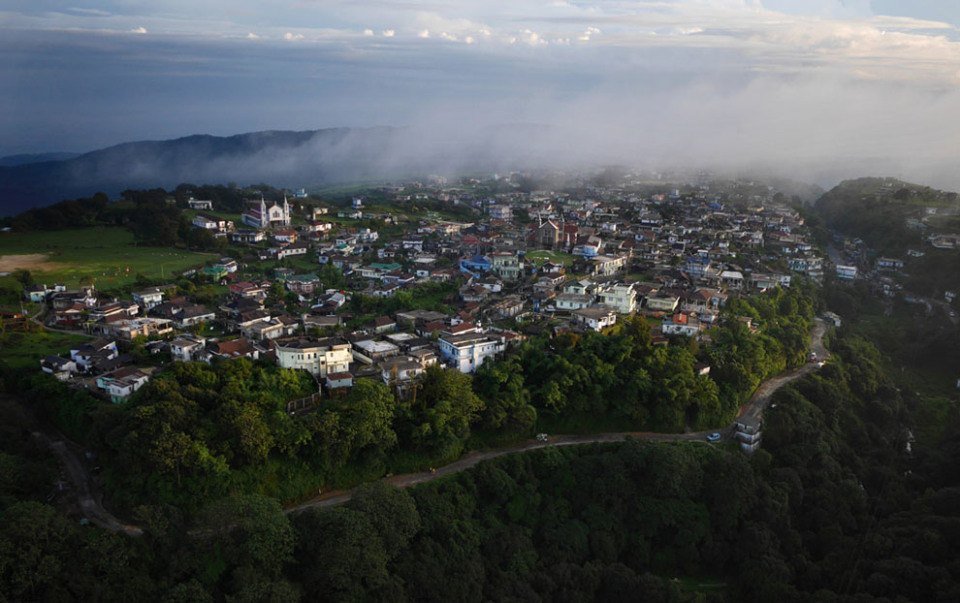
The village of Mawsynram, claiming to have the highest average rainfall on Earth. Perched atop a ridge in the Khasi Hills of India’s northeast, the village receives 467 inches of rain per year – thirteen times that of Seattle. The heavy rainfall is due to summer air currents sweeping over the steaming floodplains of Bangladesh, gathering moisture as they move north. When the resulting clouds hit the steep hills of Meghalaya they are “squeezed” through the narrowed gap in the atmosphere and compressed to the stage they can no longer hold their moisture, causing the near constant rain the village is famous for.
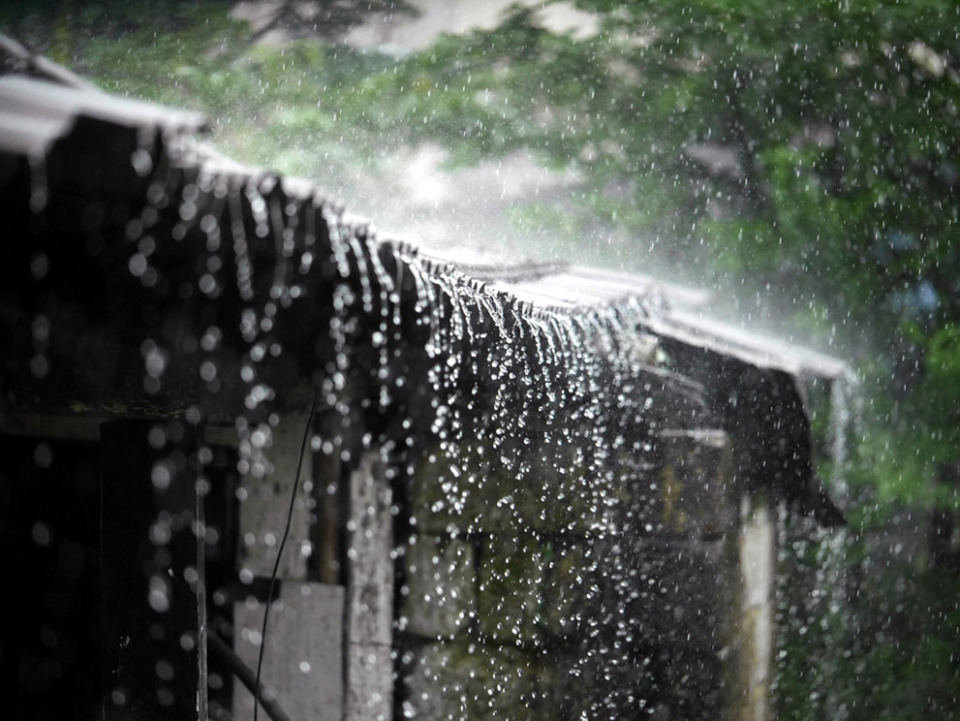
Rain hammering down on a roof in the village on July 6, 2014. In the two peak monsoon months of June and July Mawsynram is hit with an average 275 Inches of rain – New York receives 60 inches in a year.
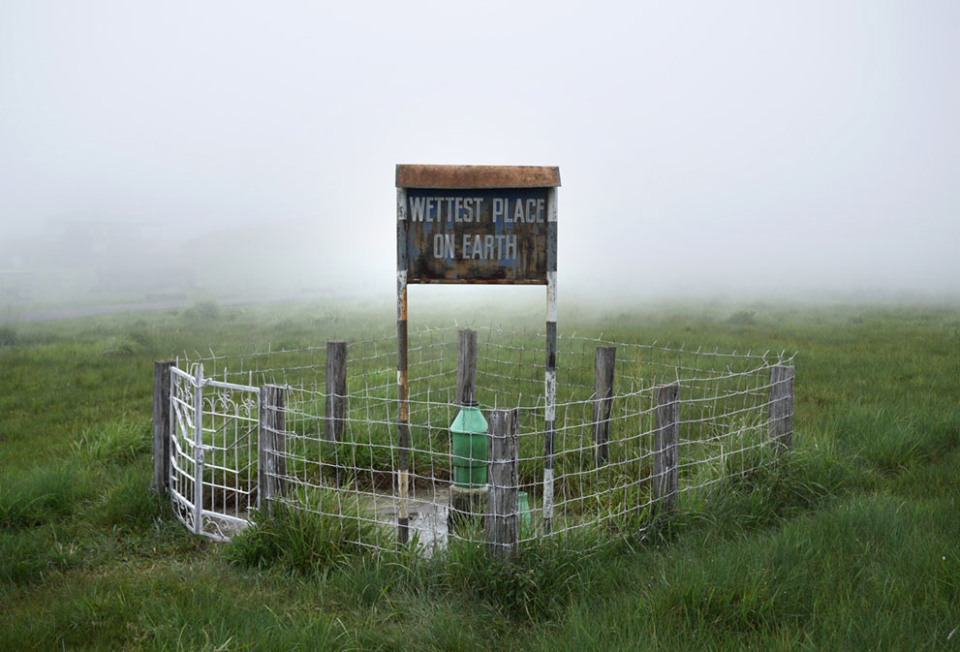
The weather station on the outskirts of Mawsynram. Measurements from the station are taken monthly, but by the end of 2014 an automated digital measurement system will replace this station.
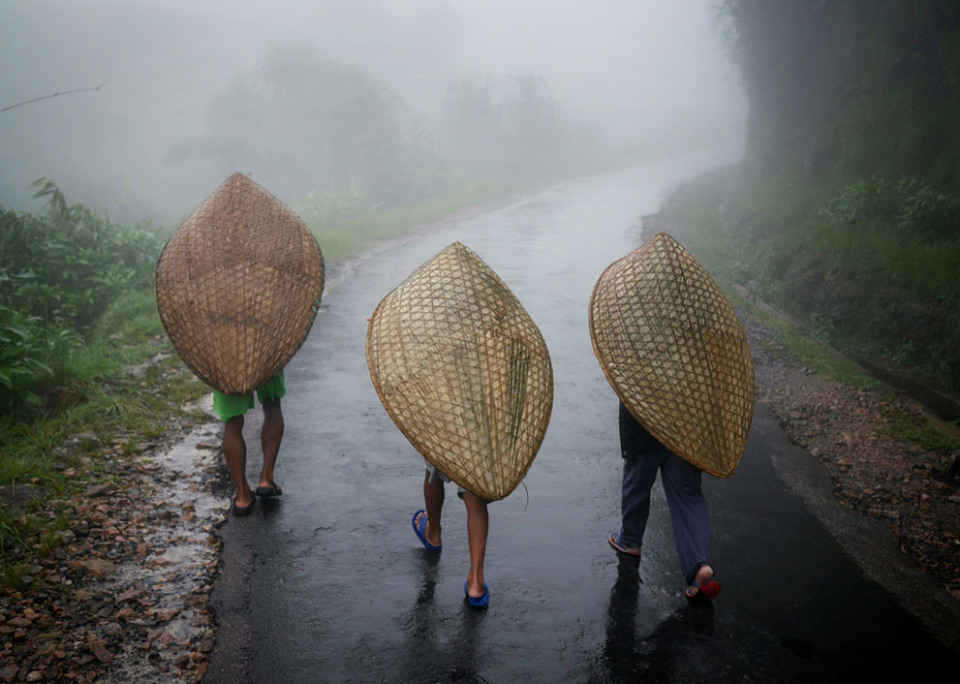
Three laborers walk into Mawsynram under the traditional Khasi umbrellas known as knups. Made from bamboo and banana leaf, the knups are favored for allowing two-handed work, and for being able to stand up to the high winds which lash the region during heavy rainstorms.
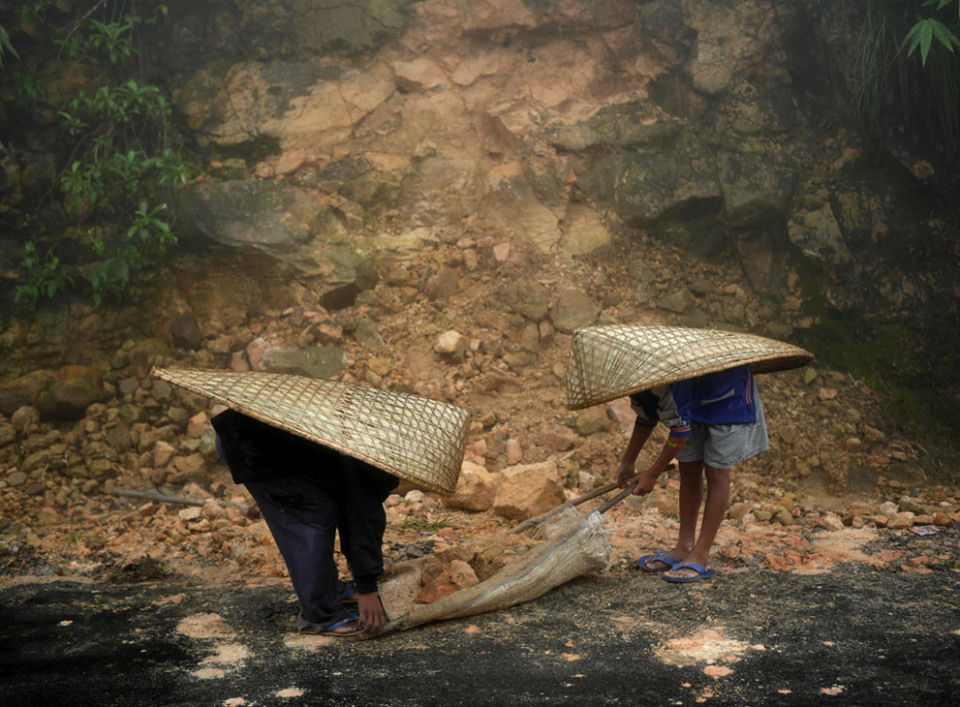
Laborers wearing knups clear rockfall after a night of heavy rain in Mawsynram. Major repair works are impossible through the monsoon rains but these men are tasked with keeping the roads passable until October when the rainy season ends and the contractors’ heavy machinery can be brought in. They earn $2.60 per day.
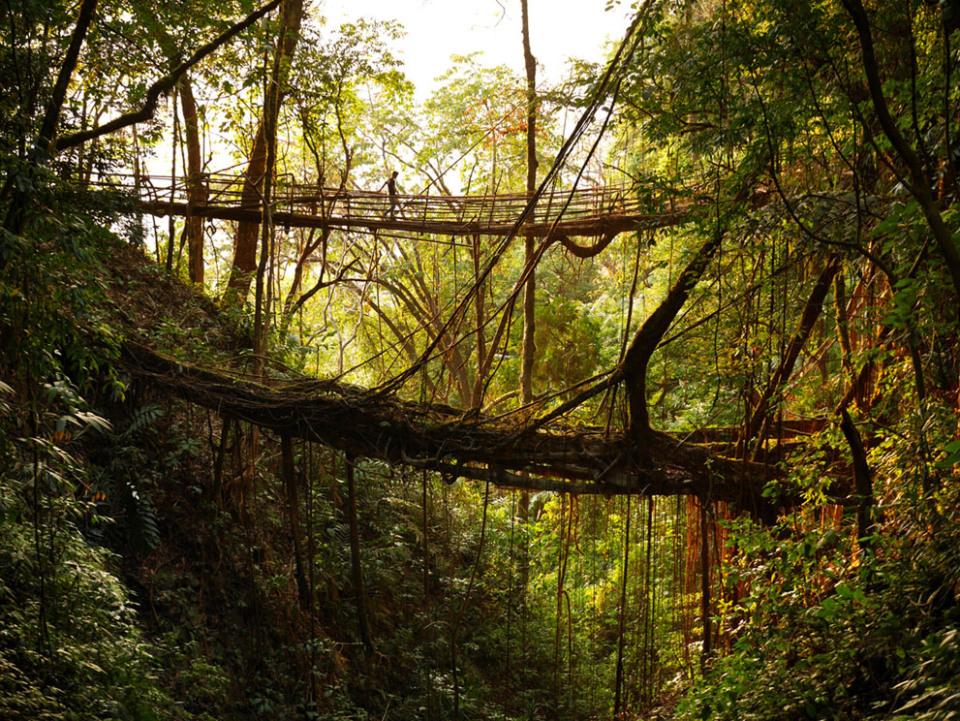
A local guide demonstrates a tree root bridge being developed to replace an older, circuitous route across a gorge deep in the jungle near Mawsynram.
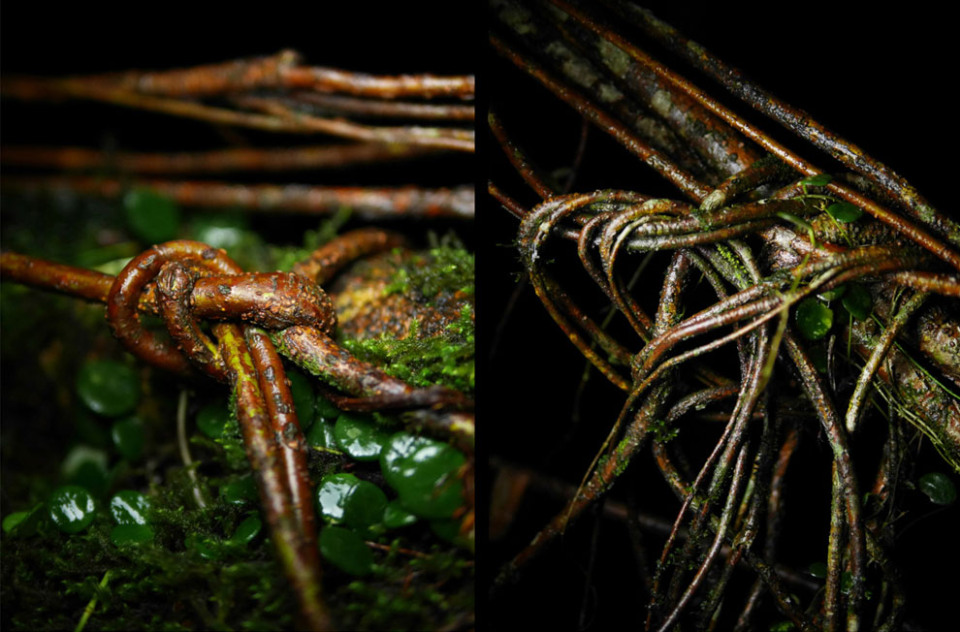
Examples of the of thin aerial roots which locals have knotted into place to manipulate rubber trees into bridges and ladders which can stand up to the rain-soaked environment of Meghalaya.
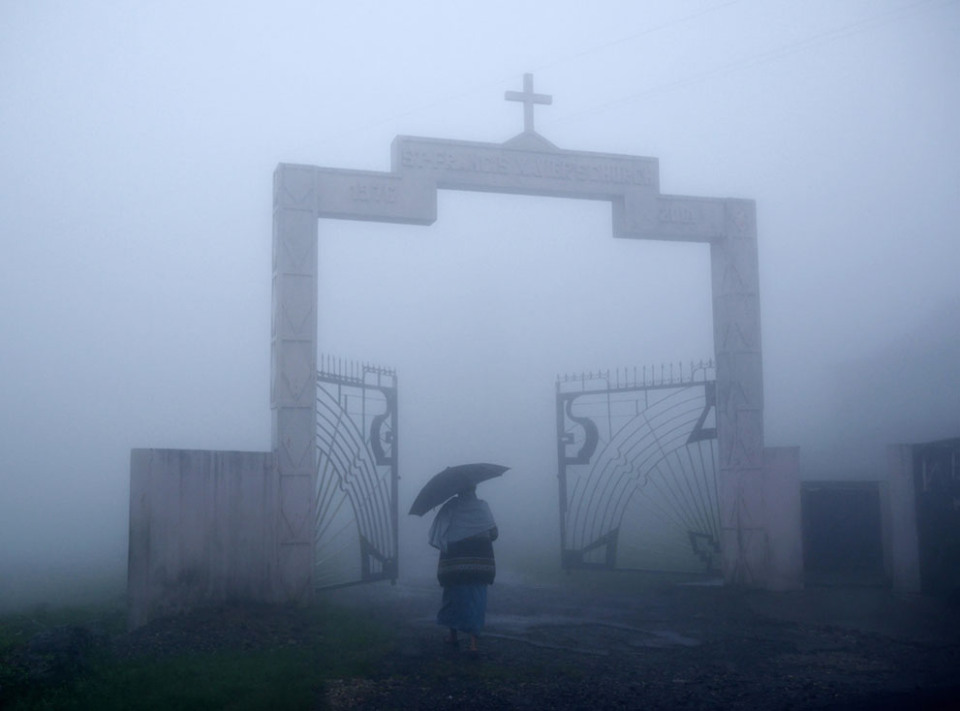
An elderly Khasi woman is the first arrival to Sunday mass in Mawsynram’s Catholic church. Around 70% of Khasi are Christian, largely due to the Reverend Thomas Jones who, in 1841 clambered up into the hills from the plains of Bangladesh and established the region’s first church in the neighboring town of Cherrapunji.
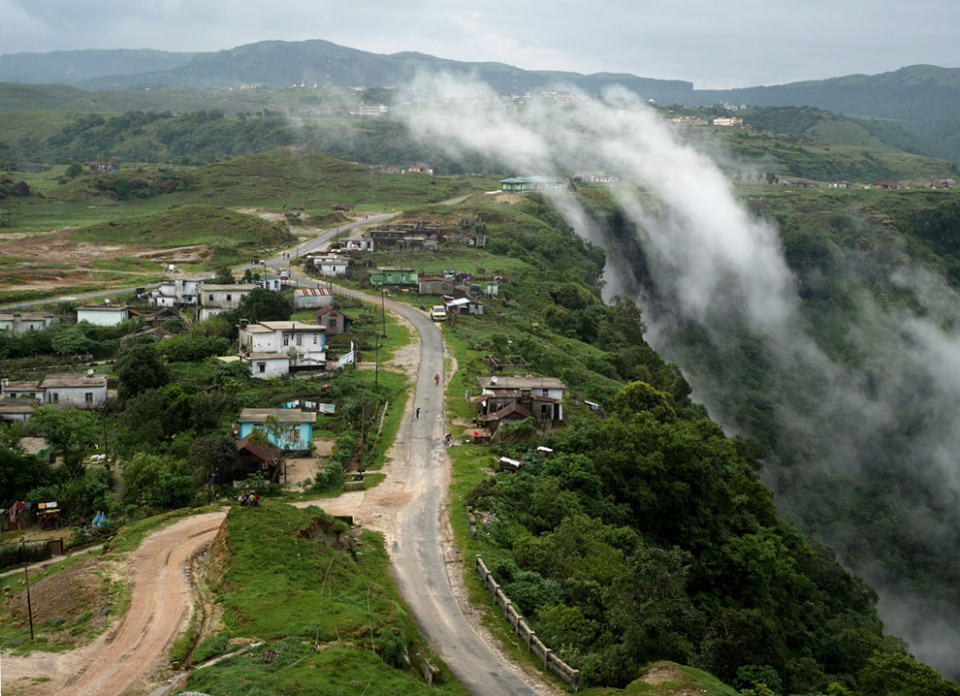
Clouds curl over the eastern edge of the village where cliffs drop almost vertically to the floodplains below.
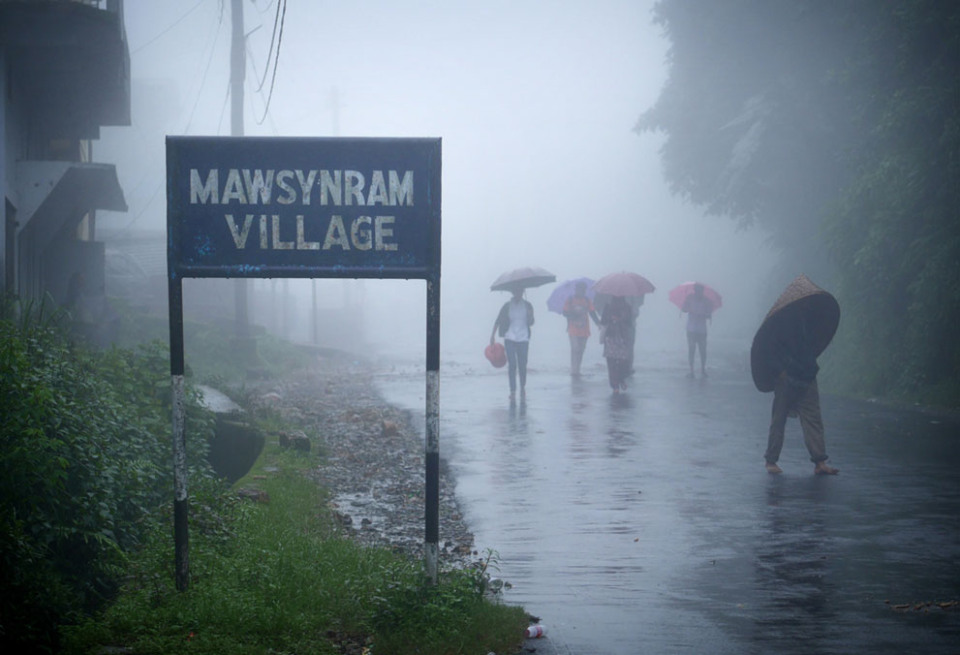
The entrance to Mawsynram Village. Like most villages in the Meghalaya region of India’s northeast, the people here are Khasi, an indigenous minority numbering about 1.2 million within India.
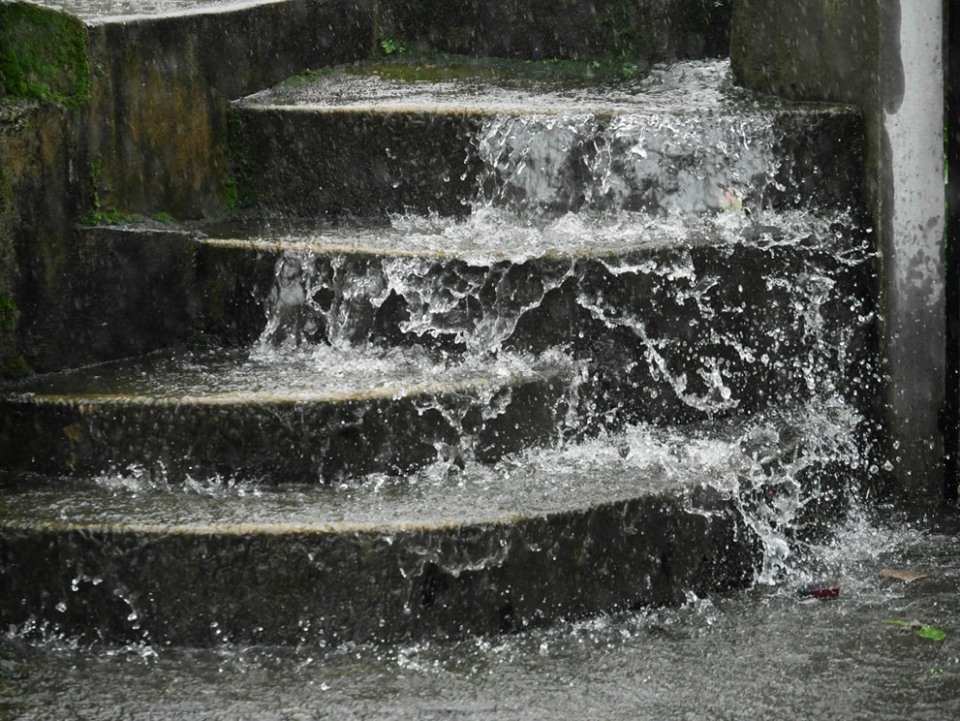
Rainwater surges through Mawsynram Village during a heavy downpour.
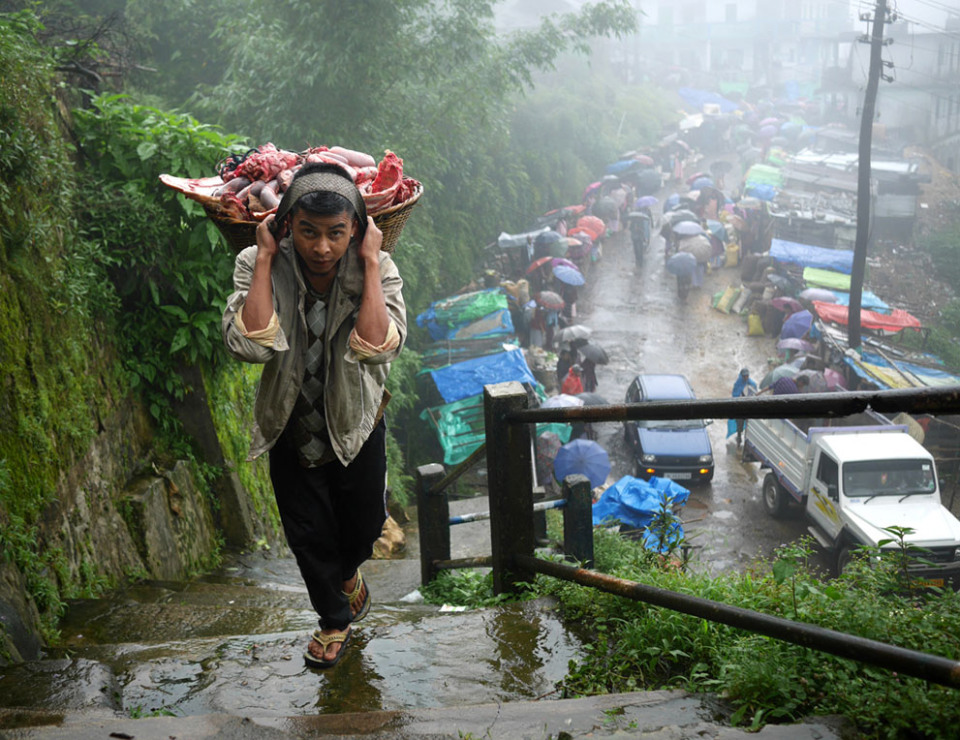
Winchester Lyngkhoi carries fresh meat up to his butcher’s stall on market day. When asked if it was hard to live with so much rain, the 26 year old replied, “we can’t think about that. Here there’s always rain but we have to work, so it’s no good wondering about it.”
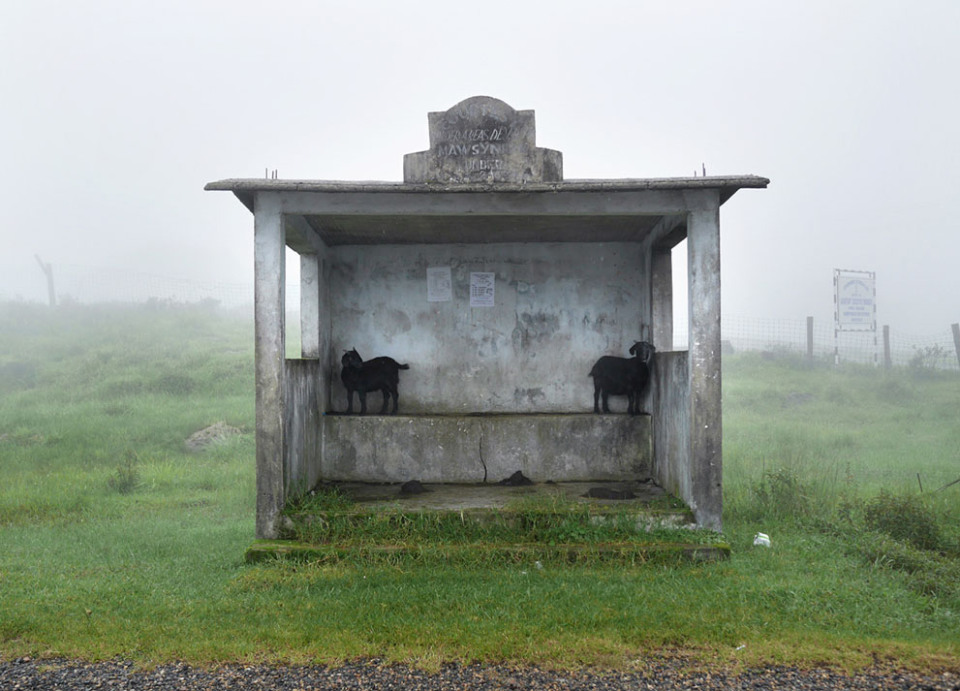
Goats shelter in a bus stop during a drizzly afternoon. While it doesn’t rain all day during the monsoons in Mawsynram, it does rain every day, with the heaviest rainfall coming mostly during the night.
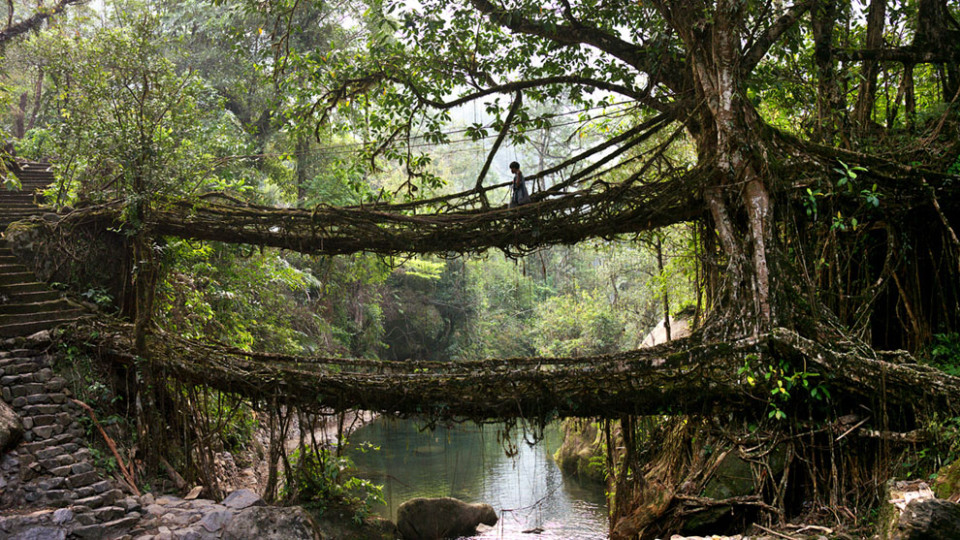
In the valley beneath Mawsynram, the village of Nongriat maintains the best-known example of the “living bridges” which have been used for centuries in the region.
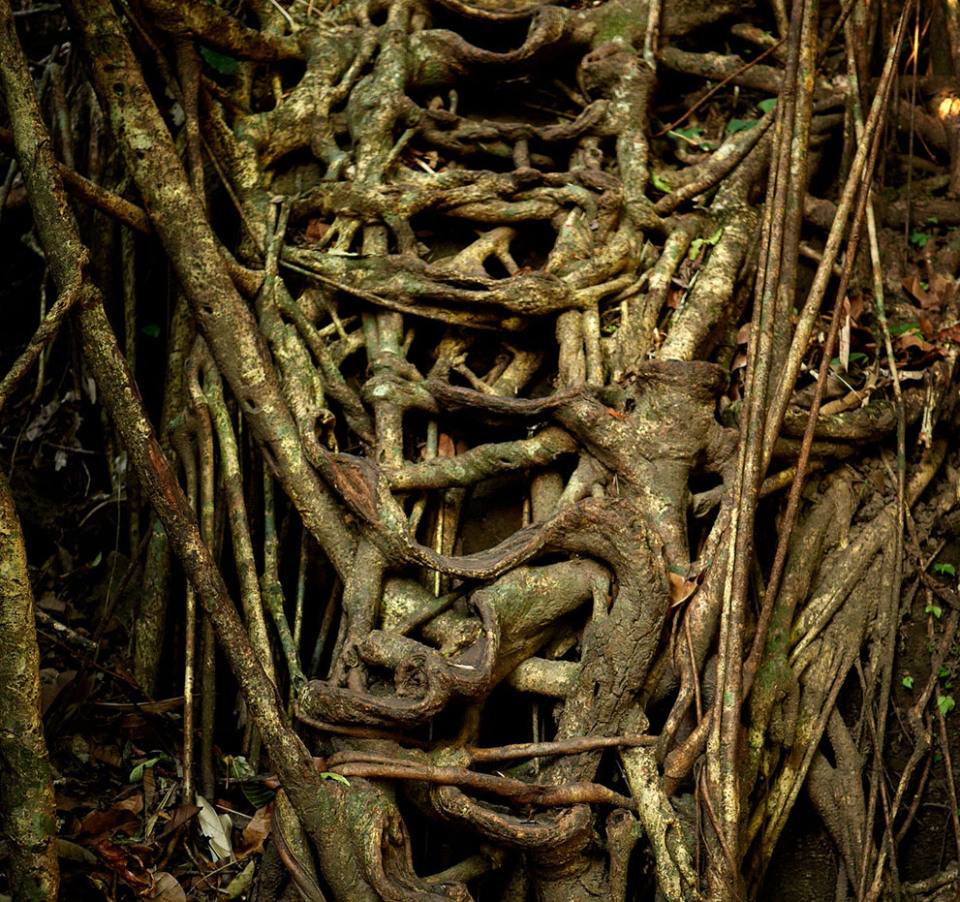
As well as the bridges, the jungles beneath Mawsynram hide “living ladders” curled into shape to assist villagers descending the steep flanks of the Khasi hills.
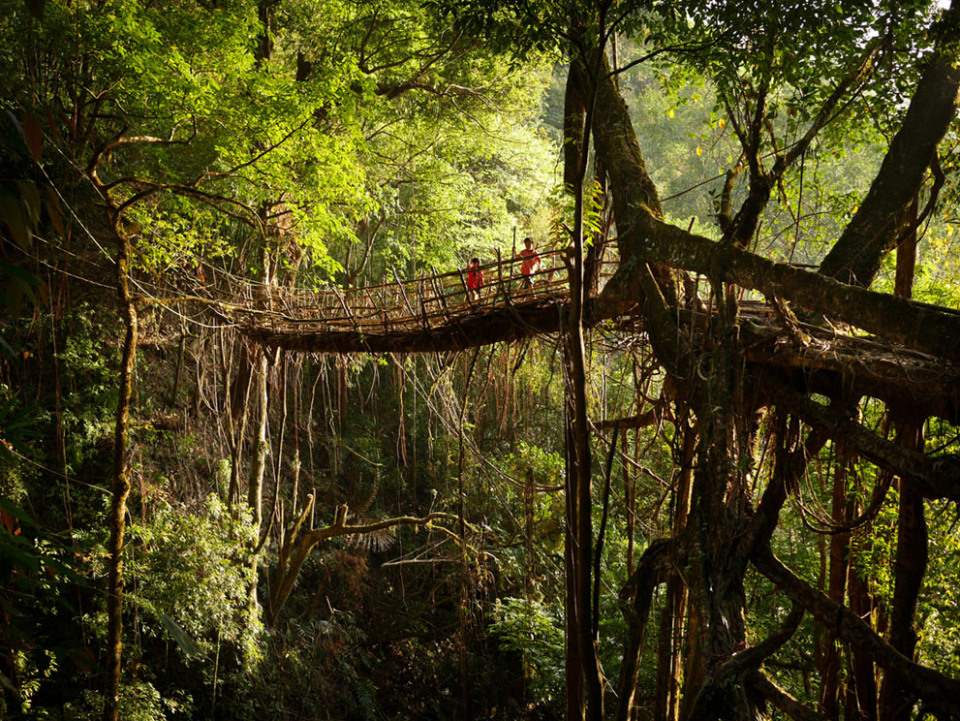
Local boys walk over a tree root bridge currently being forged, deep in the jungle near Mawsynram. The skeleton of the bridge is bamboo, with tendrils from the surrounding rubber trees are being fixed onto the structure strand by strand. By the time the bamboo has rotted away, within 6-8 years, locals say the roots of the tree will be able to bear a person’s weight.
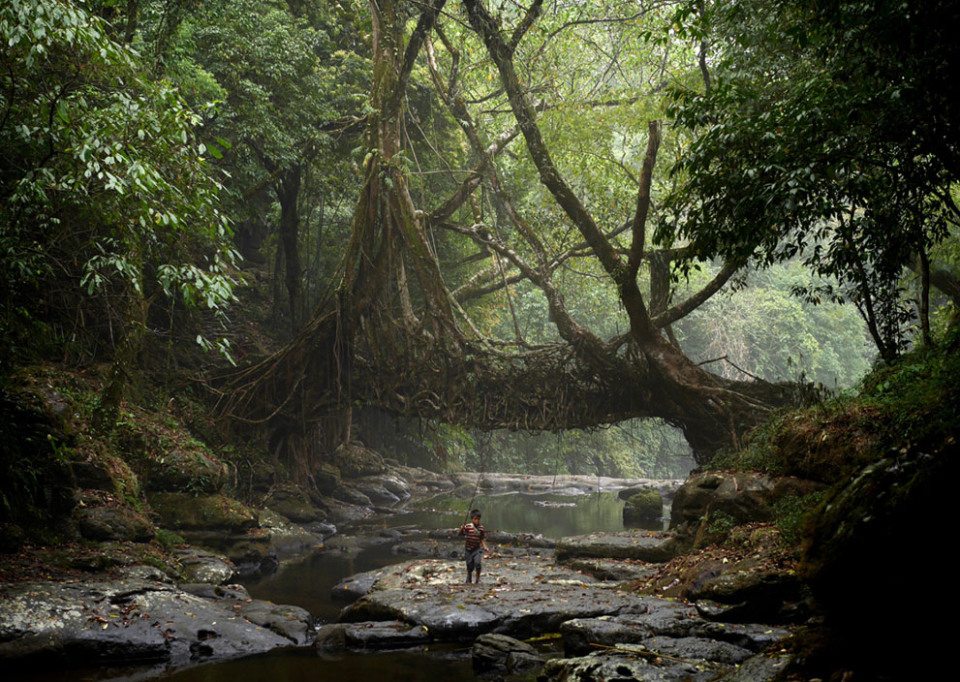
A young fisherman walks under the ancient tree root bridge at Mawlynnong village.
You May Be Interested IN